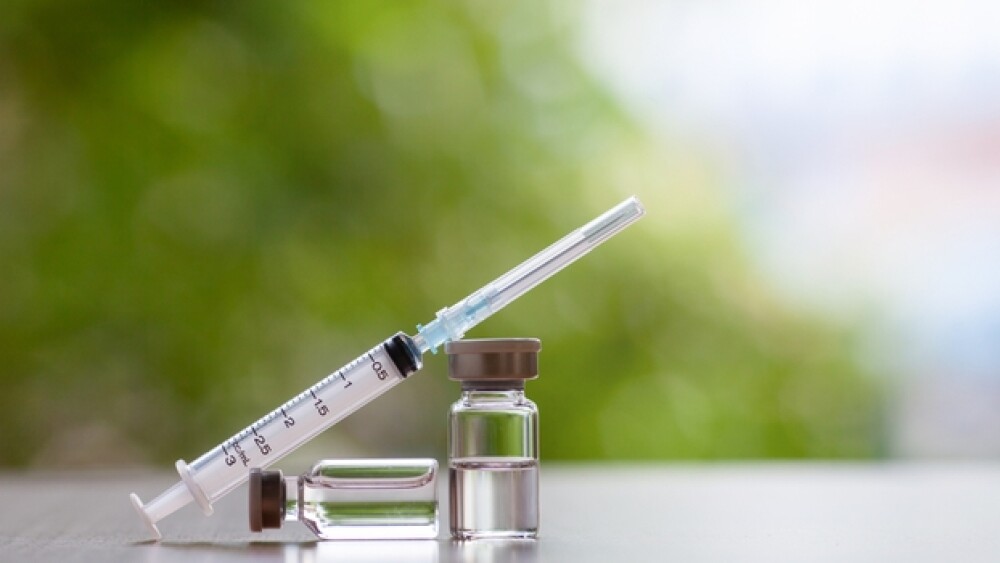Traditional vaccine development and regulatory policies are changing in response to the current pandemic. Some of those approaches may become more common, expanding into other, non-pandemic-related areas in the future.
Traditional vaccine development and regulatory policies are changing in response to the current pandemic. Some of those approaches may become more common, expanding into other, non-pandemic-related areas in the future, according to experts speaking at a briefing hosted by The Commonwealth Fund and the Alliance for Health Policy on April 17.
“Traditional vaccine development is a complex process that can take 10 to 15, sometimes even 20, years and cost more than $1 billion by the time every element is factored in,” said Litjen “L.J.” Tan, Ph.D., chief strategy officer, Immunization Action Coalition.
Especially during a pandemic, that needs to change.
“To accelerate vaccine development, people are talking about parallel paths for trials in which studies are optimized for multiple target populations throughout the world, and for differing socioeconomic conditions,” Tan said.
Adaptive trial design is another approach, building-in flexibility to modify trials in response to new information.
For these new, flexible trials to run smoothly, drug developers must initiate early, continuous collaborations with regulators to ensure they are engaged with a flexible process. That includes early discussions about emergency use authorization (EUA) or other approvals, as well as distribution.
“This requires strong global collaboration,” Tan said.
During this pandemic, “The FDA anticipates working differently,” said Peter Marks, M.D., Ph.D., director, Center for Biologics Evaluation and Research (CBER), U.S. Food and Drug Administration. He cited the need to look at data in real time, “decrease holes between different stages of development, and use adaptive trial design.”
The FDA’s acceptance of various trial designs will depend on whether the SARS-CoV-2 virus is circulating in the population. “If the virus is not circulating, drug developers may be limited to a conventional clinical trial,” Marks said.
If the virus is circulating, designs may be more creative. Real-world evidence (RWE) will play a key role. For example, Marks continued, “It is impossible to vaccinate everyone at once. Therefore, one could imagine, as a vaccine runs off the finish line, setting up a trial comparing groups that were vaccinated at different times. Randomized trials could be accomplished in real-world situations,” too. Here, unvaccinated individuals could serve as controls for the first groups to be vaccinated – healthcare workers, first responders, and those at higher risk of contracting COVID-19.
He readily admitted each of those design possibilities are flawed but, “We’ll discuss all possible designs. We can’t dismiss any potential design out of hand.”
“A whole government approach is needed to ensure the best vaccines make it to the populations and then, that the population is vaccinated,” Marks continued. The industry also must work with federal partners not just to get a vaccine approved, but delivered.”
Given the huge global populations that need vaccination, delivery will be cumbersome and time-consuming. Although the first vaccines could be available in 9 to 12 months in a perfect world, 12-18 months is more realistic. Even then, it won’t be available to everyone who wants it. The FDA is forming a working group, similar to the National Vaccine Advisory Committee at the Department of Health & Human Services, to begin to prioritize vaccinations, based upon groups’ risk exposure.
It will have plenty of vaccine candidates to choose from. The Milken Institute is tracking 86 active vaccine development projects globally. “Six are in clinical trials and we expect about two dozen more to enter clinical trials this summer and early fall,” said Ester Krofah, executive director, FasterCures.
“We’re seeing a lot of partnerships between big pharma and smaller biotechs, as well as university-led partnerships,” she said.
Many are based on prior relationships, while others are the result of sponsorships by the National Institutes of Health and CEPHI.
To handle the vaccine, therapeutic and diagnostics trials related to COVID-19 without slowing regulatory reviews for other therapeutic areas, “The FDA must have surge capacity. It needs enough staff to actively provide clinical design input and review data quickly, in real time.” The agency needs to be able to pivot as needed.
The FDA plans to increase its staff and currently is interviewing job candidates through video, Marks said.
“From the FDA’s perspective, developing a vaccine for this virus is one of the most important things we have to do in the coming year. Unfortunately, it’s not unlikely that we’ll see a second or third wave if we don’t get things right, and get them right now,” Marks said.“We’re dealing with a pathogen for which we did not have a vaccine candidate in the pipeline. We’re trying to move things forward as best we can.”
That means working with vaccine candidate sponsors to review their preclinical data, understand the vaccine characteristics and create development plans, and – importantly – determine whether any vaccine candidates offers sufficient efficacy and safety to warrant taking further into development.
The issuance of EUA’s depends on the situation at them time, as well as the safety and efficacy of the vaccine in question. If the virus is still circulating when vaccines are ready, EUAs may be forthcoming. If the virus is not circulating, EUAs are unlikely, Marks explained.
Regulatory approval is only part of the challenge, though. From a coding and reimbursement perspective, Krofah called for creative solutions so the FDA and the Centers for Medicare & Medicaid Services (CMS) can avoid significant delays in access caused by a lack of clarity regarding billing and payment. Currently, the CMS has about 10 career staff to deal with coding and reimbursement decision, so they’re advocating early conversations.
Krofah advised establishing coding and reimbursement agreements up front and engaging in parallel review processes and advance purchase agreements.
There’s clearly a balancing act between speed on one hand and safety and efficacy on the other, as drug developers and regulators try to end this pandemic. The old way of working is insufficient for the current crisis because, as Tan put it, “We don’t want perfection to be the enemy of the good.”






